Face Lift & Neck Lift Surgery
The following information sheet is intended to assist patients undergoing facelift and necklift surgery with Dr Nicholas Lotz.
Jump to:
-
Patient Information
Fact Sheet
-
Tags
Facelift & Necklift
face-neck-lift-surgery-icon
With age and following weight loss the skin and soft tissues of the face begin to drop due to the effects of gravity and loosening of the elastic tissue in the skin. This may result in the formation of “jowls” and folds of skin on the cheeks and front of the neck. In the very early stages this can sometimes be addressed by lasers which attempt to tighten the skins collagen, but in more significant cases surgery is the best option.
A facelift or a necklift is performed to tighten the deep muscle layers of the face and the skin to restore the tissues to their earlier position.
This surgery is commonly combined with a blepharoplasty or browlift to rejuvenate the upper face.
When performed well the result gives a very natural appearance and avoids the “wind swept” look that patients considering a facelift fear. There is often a loss of volume in the mid face area with age as well, and this can be improved by the use of fat injections at the time of surgery.
Before the
surgery
During your initial consultation, Dr Lotz will spend time with you discussing exactly what your concerns are. All patients have slightly different requirements, and will require surgery to be tailored to their needs. Dr Lotz will explain in detail what is required in your case, and the relevant risks and expected recovery will be discussed.
You will be shown photographs of other patients who have undergone similar surgery, so you have an idea what to expect with respect to results.
You will be sent an information pack further explaining the procedure, along with a detailed, personalised quotation which explains all the relevant costs pertaining to the procedure as well and any heath fund or Medicare rebates applicable.
It is important that you stop any blood thinning medications at least 10 days prior to surgery in order to reduce the risk of bleeding.
You should also cease smoking a month before and a month after your surgery to reduce the risk of skin healing problems.
You will have a second consultation a week or two prior to your surgery to answer any final questions you may have, and photographs will be taken to aid planning your surgery.
The surgery
Dr Lotz always performs his facelifts in an accredited hospital under general anaesthetic with an experienced anaesthetist. The procedure takes around four hours.
Surgical procedure
Dr Lotz does not shave your hair during the procedure, and will design the incisions to sit in the natural creases and folds around and behind your ears and in the hairline to conceal the final scars. If the muscles at the front of the neck require tightening or there is a lot of loose skin under your chin then there will also be an incision made in the crease under the chin. Placement of the incisions is made carefully to ensure they will remain hidden and are easily concealed.
Through these incisions, the skin is lifted up off the underlying muscle layer, which is known as the SMAS (superficial musculo aponeurotic system). This protects the important facial nerve branches, which sit under this layer and control the movements of your face. Most modern facelift techniques then employ some form of tightening of this muscle layer, and you will hear many terms used by surgeons such as “deep plane facelift”, and in most cases this is just a marketing ploy as most perform variations of the same technique. After the muscle layer is tightened, the skin is re-positioned and any excess trimmed and a drainage tube is placed under the skin to remove any fluid accumulation.
The wounds will be stitched closed and a light bandage will be wrapped around your head and neck, with your face left uncovered.
Unlike many other surgeons, Dr Lotz does not use any surgical assistants, so you can be assured that he does every part of your surgery himself.
After the surgery
Post-operative Recovery
Dr Lotz will come in to see you the morning following surgery and the bandages will be removed.
You will be allowed to shower and wash your hair that morning prior to being discharged from the hospital. The drain will usually be left in place for a further 24 hours and then be removed in the rooms, however occasionally it may be removed before you go home.
You will be sent home with an elastic garment to support your lower face and neck, and this will be worn for a week after the surgery.
Follow-up
One week following the surgery the stitches will all be removed, except those behind the ears which are all dissolving and will fall out themselves after a couple of weeks. At this time you can stop wearing the supportive post-op garment.
You will be seen again 2 weeks after surgery to check everything is progressing normally and answer any questions you have about activity.
Rest and Recovery
It is important to rest for the two weeks after surgery, as anything that increased your blood pressure such as exercise, lifting, straining or bending over can potentially cause bleeding.
You will be given some antibiotic ointment to apply to the suture lines each day.
Most patients are returning to work at around 2-3 weeks after surgery. A final review will be performed at 6-8 weeks after the surgery.
Risks of face and neck lift surgery
- Anaesthetic risks
- Bleeding which may necessitate a return to operating theatre
- Infection
- Poor wound healing and skin loss (more common if you smoke)
- Temporary or permanent facial nerve injury with weakness of facial muscles
- Temporary or permanent hair loss at the incisions
- Fluid accumulation which may require aspiration in the rooms
- Numbness or other changes in skin sensation (usually temporary)
- Persistent pain
- Unfavourable scarring
- Prolonged swelling
- Skin irregularities and discoloration
- Sutures may spontaneously surface through the skin, become visible or produce irritation that require removal
- Unsatisfactory results may include: asymmetry, unsatisfactory surgical scar location and unacceptable visible deformities at the ends of the incisions. (It may be necessary to perform an additional surgery to improve your results)
- Recurrent looseness of the skin, particularly if you lose weight
- Deep vein thrombosis (DVT), cardiac and pulmonary complications
Before & After
Case Example: 1
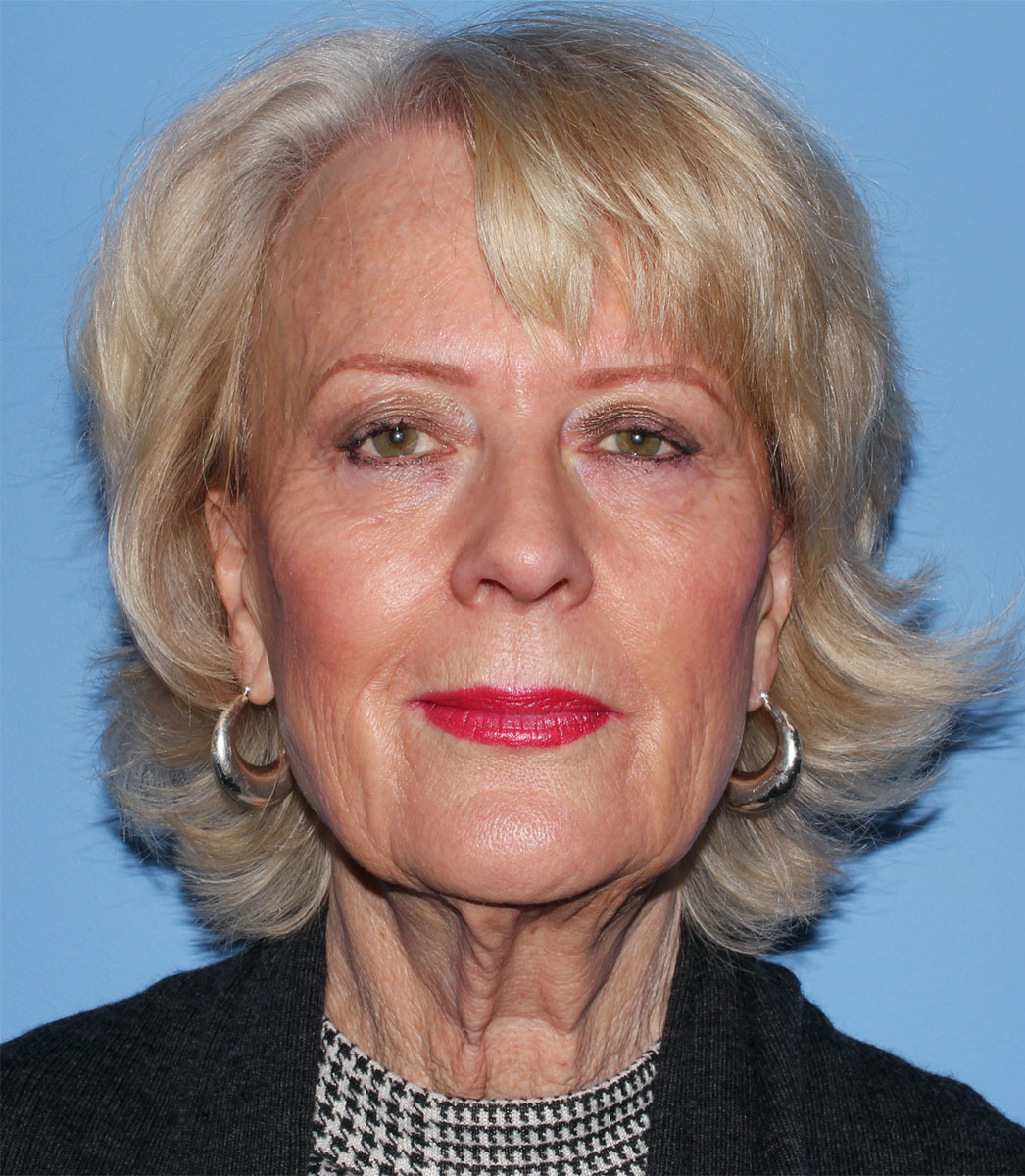
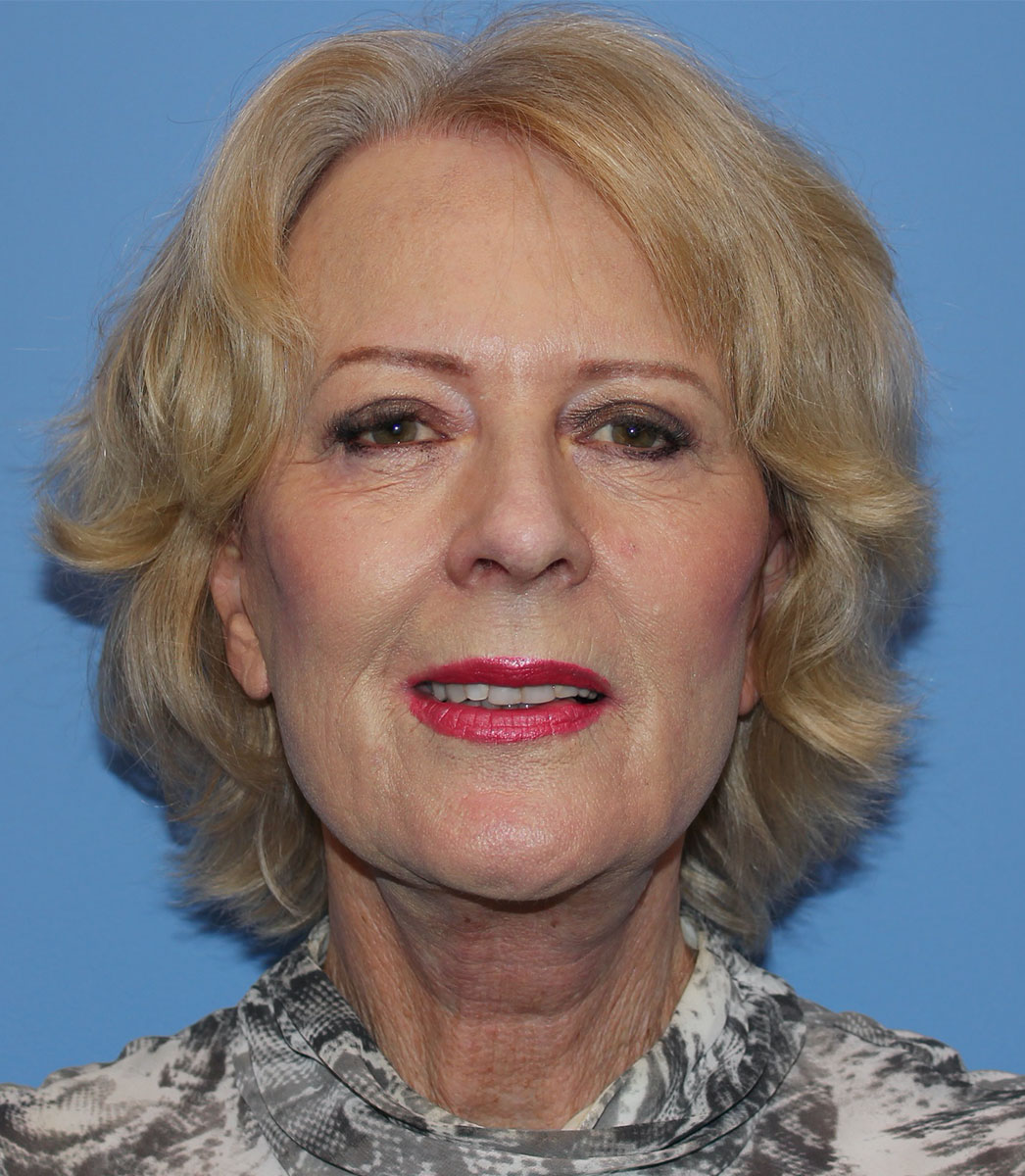
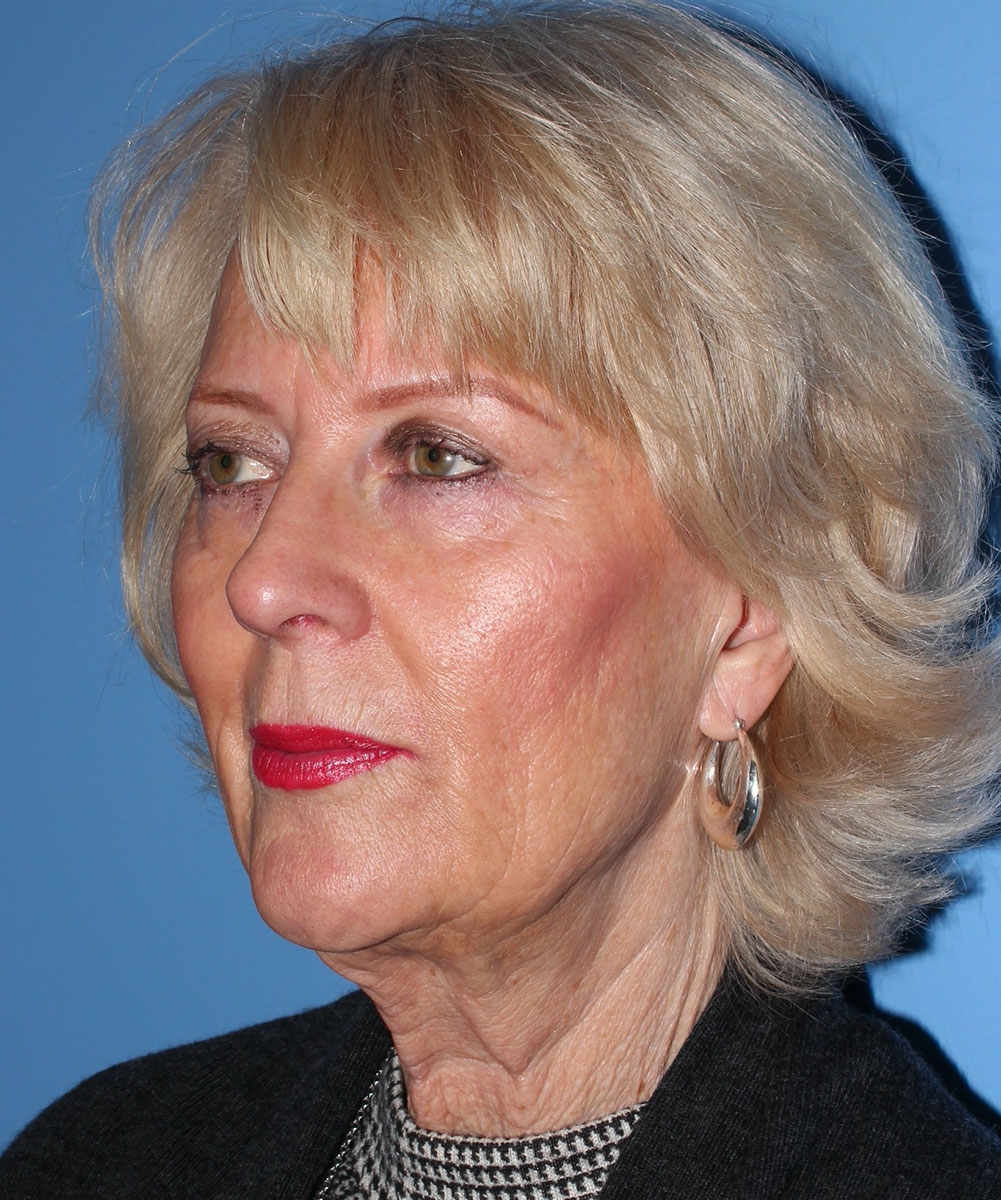
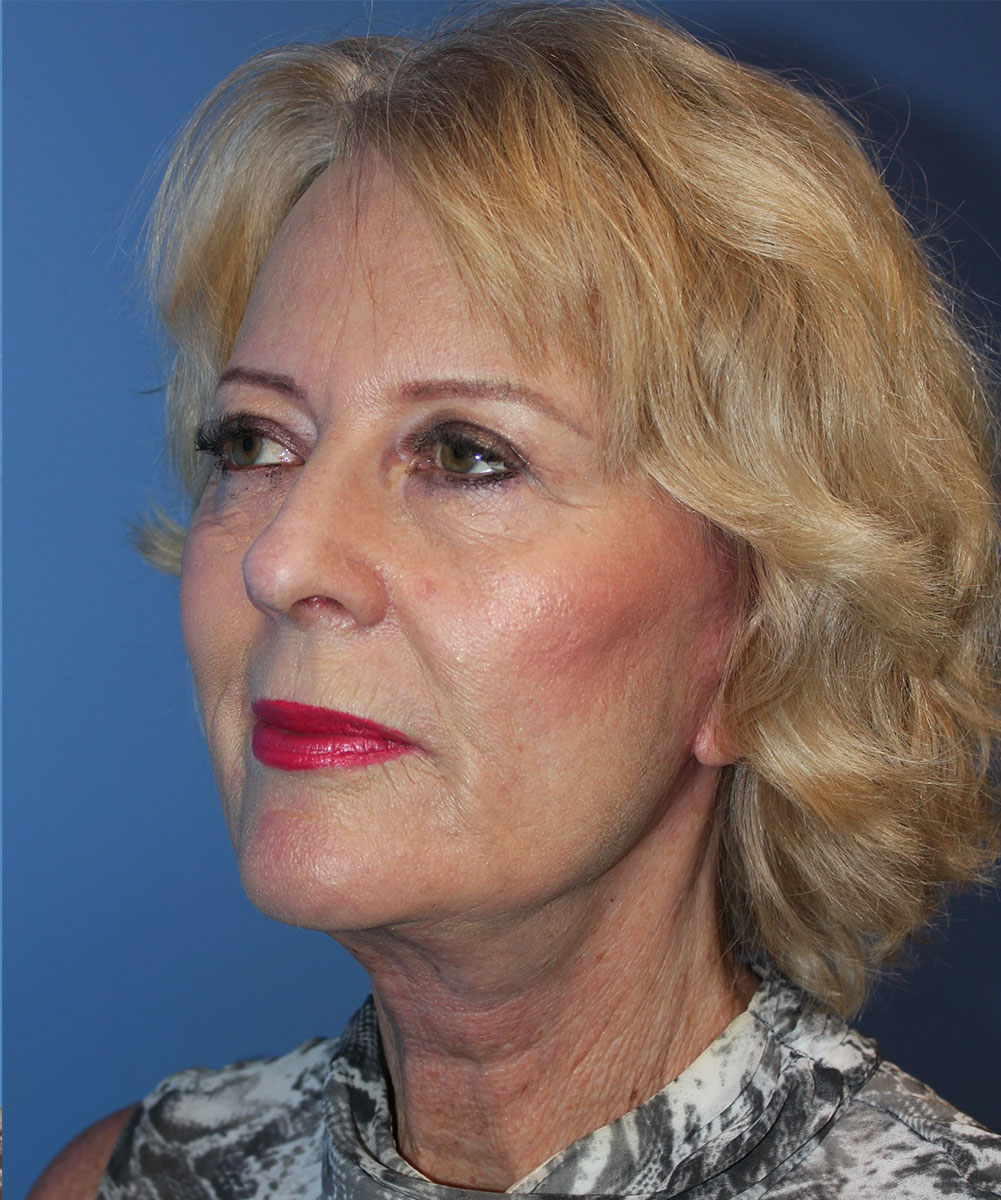
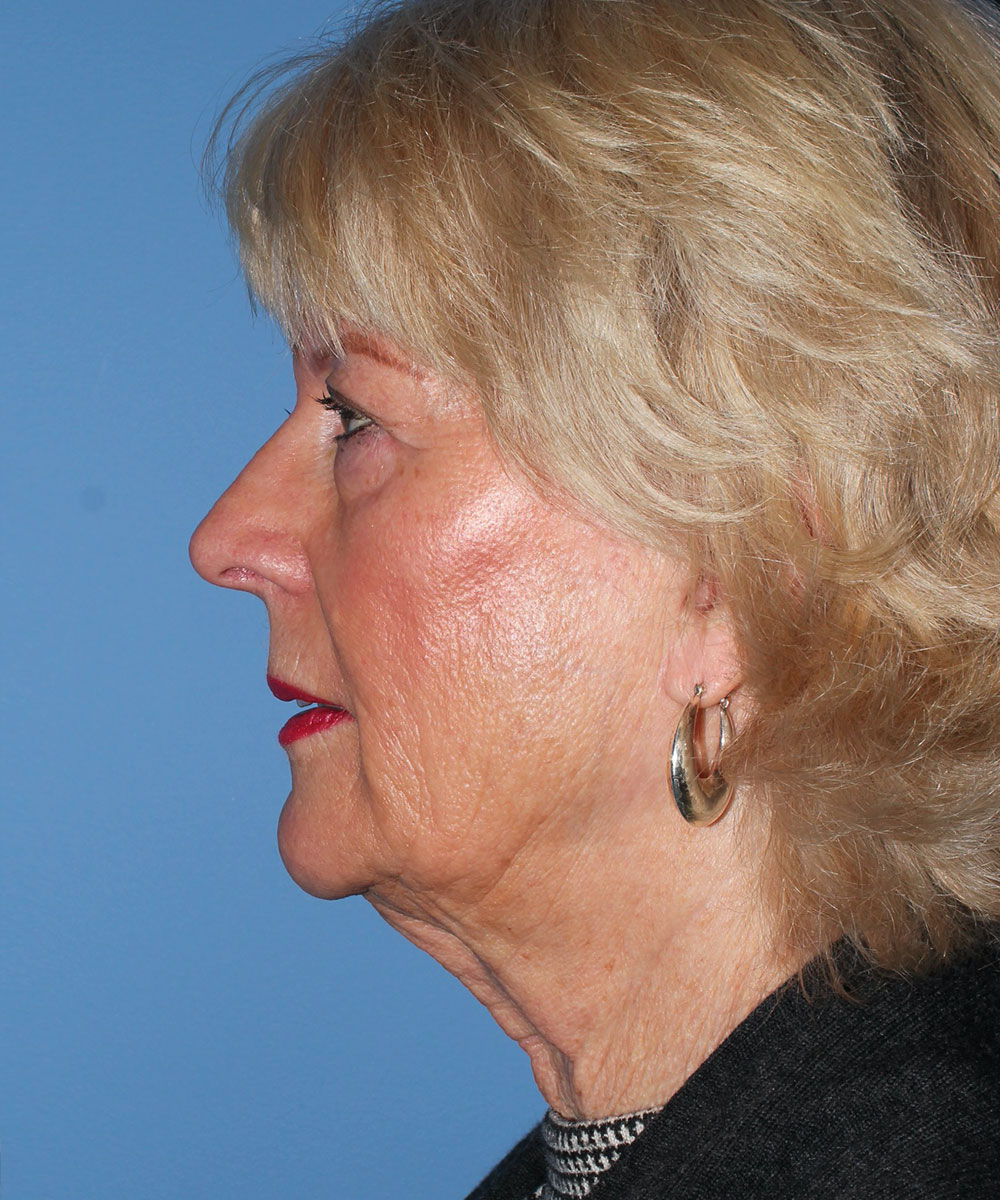
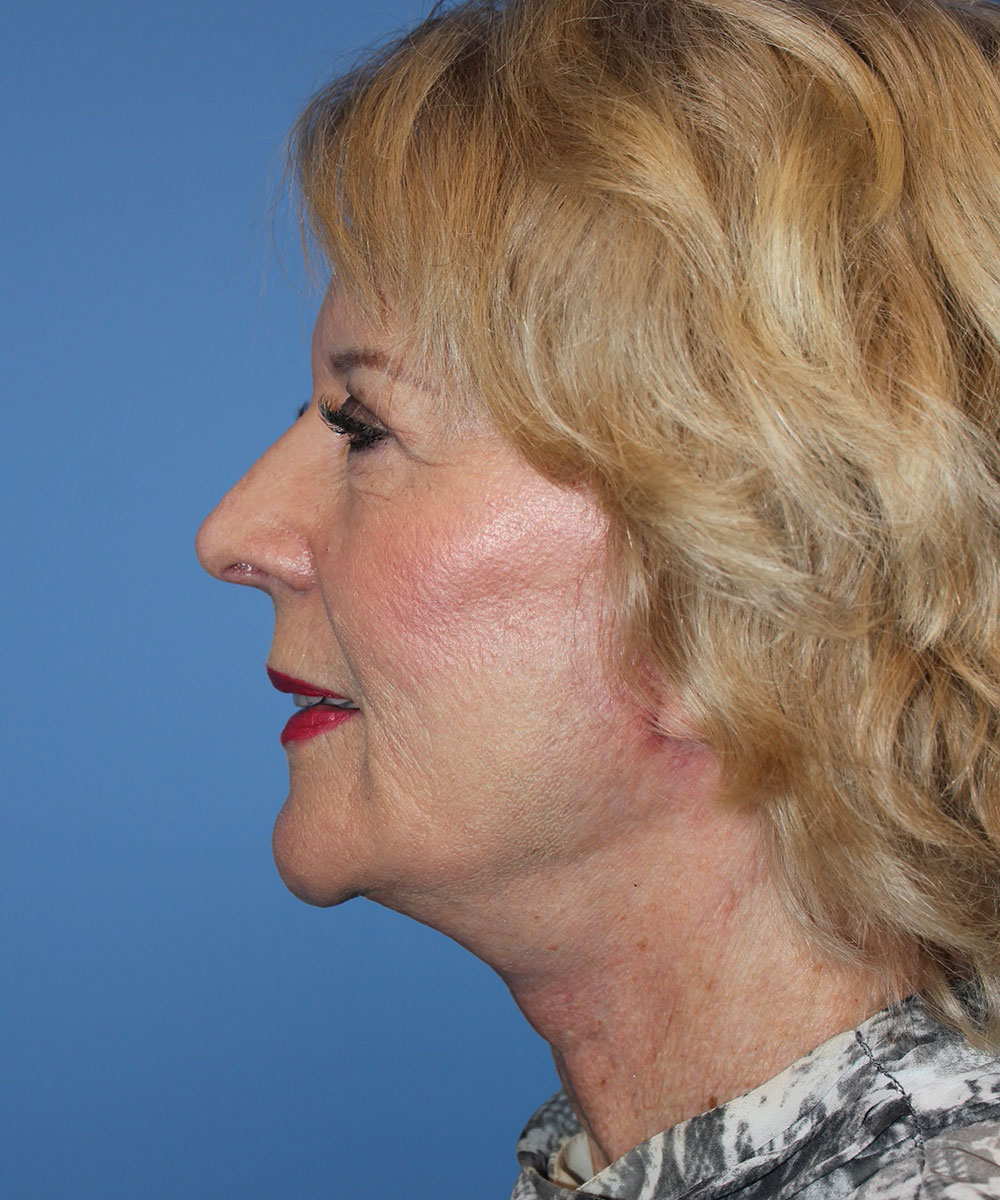
Before & After
Case Example: 2
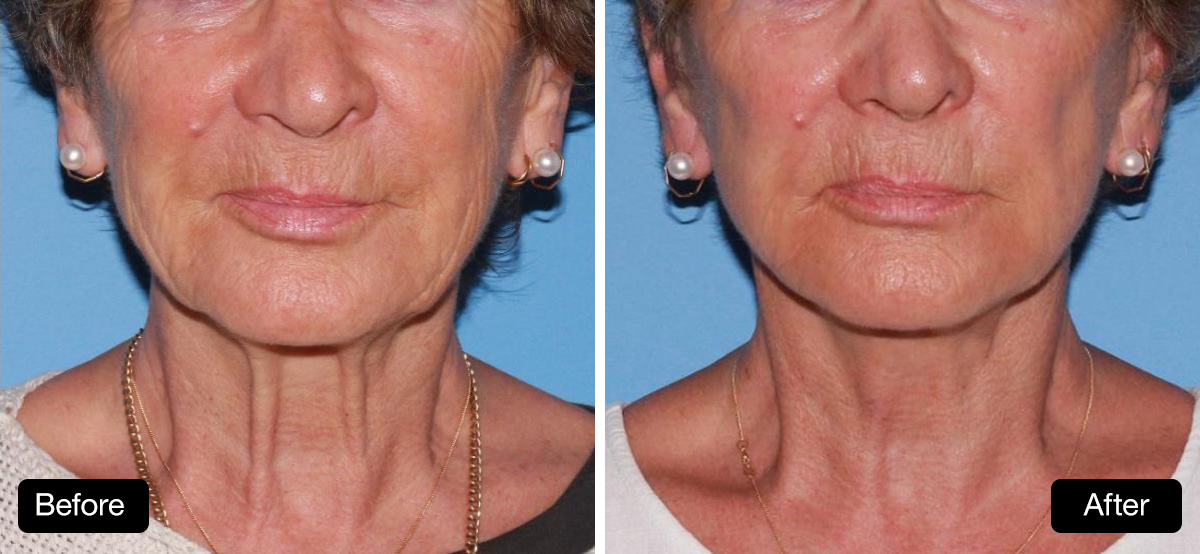
lower-face-and-neck-lift-72yo-before-after-1ab
lower-face-and-neck-lift-72yo-before-after-1ab
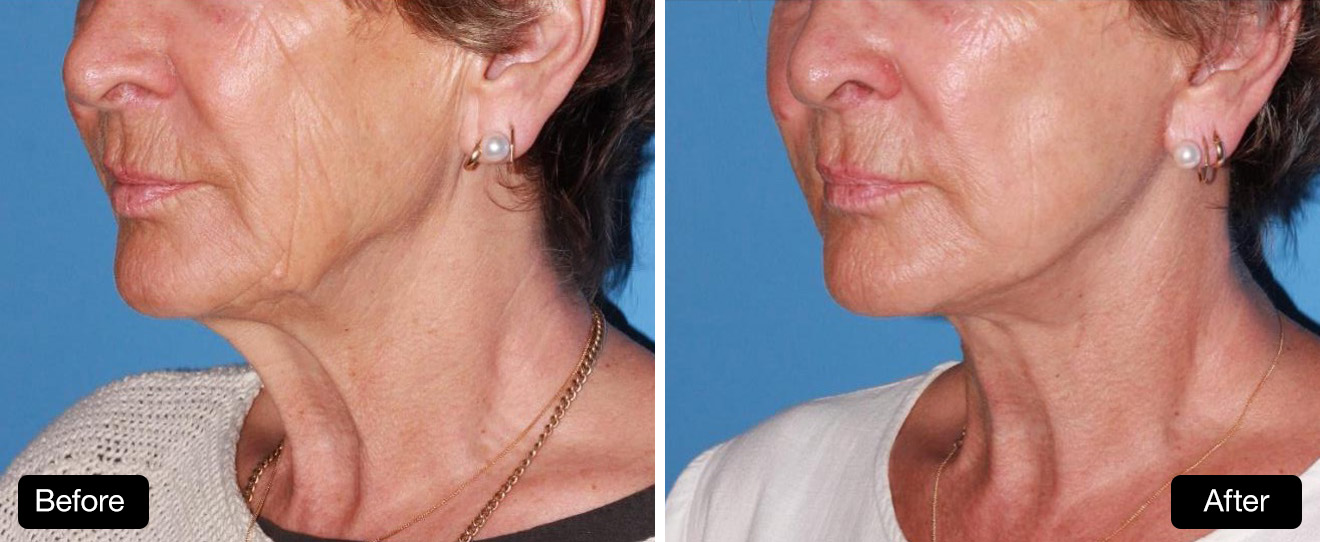
lower-face-and-neck-lift-72yo-before-after-2ab
lower-face-and-neck-lift-72yo-before-after-2ab
Before & After
Case Example: 3
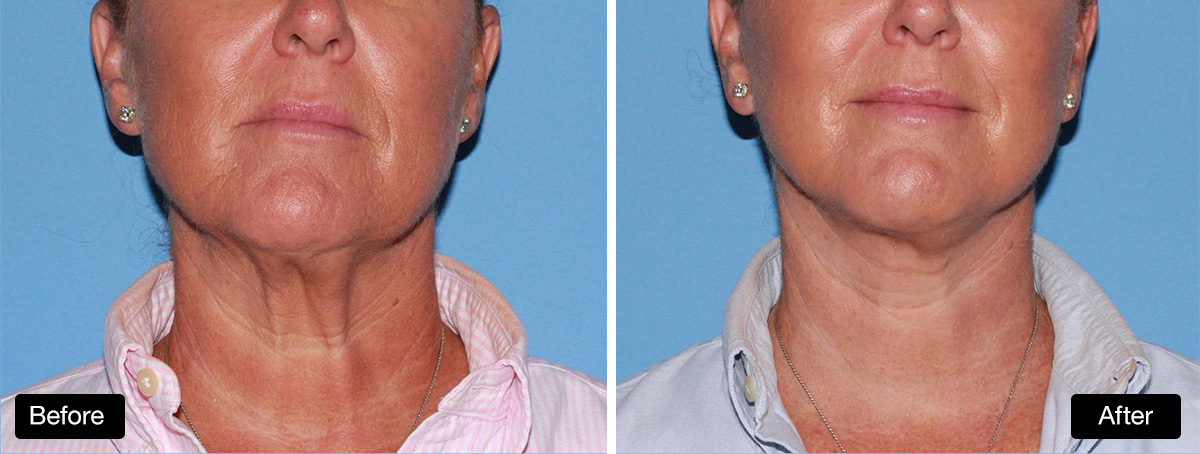
Lower face and neck lift with platysmaplasty: before and after #1
Lower face and neck lift with platysmaplasty: before and after #1
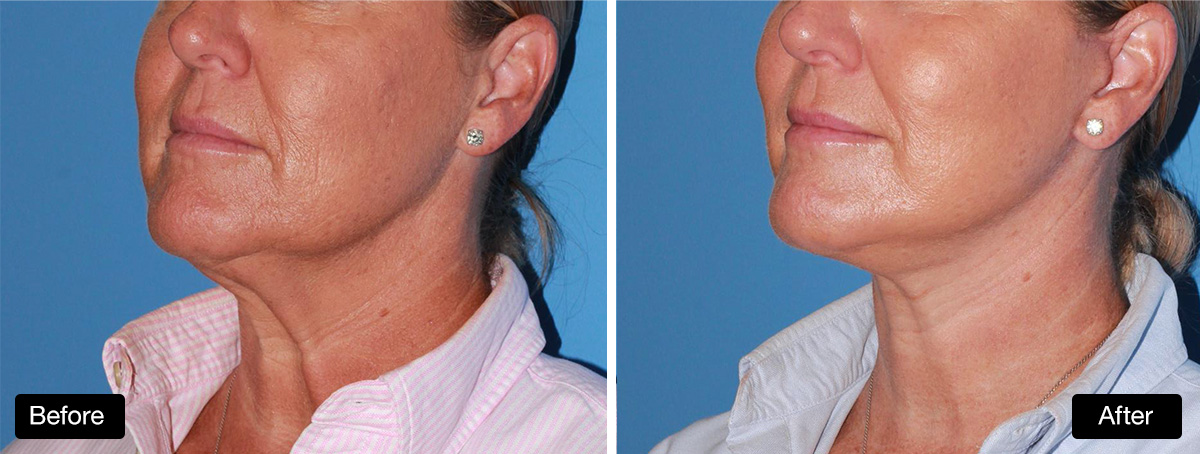
Lower face and neck lift with platysmaplasty: before and after #2
Lower face and neck lift with platysmaplasty: before and after #2
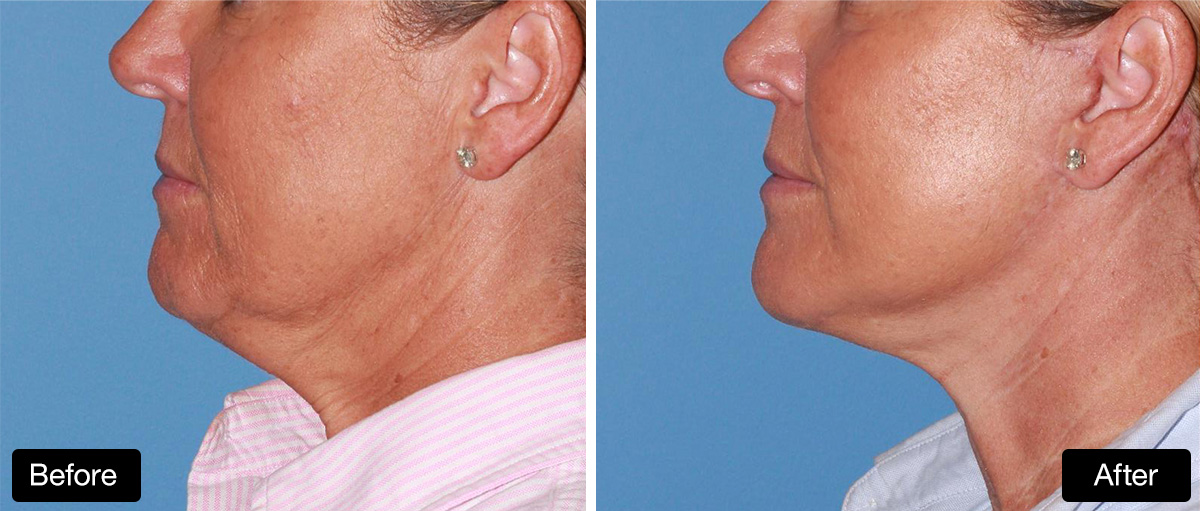
Lower face and neck lift with platysmaplasty: before and after #3
Lower face and neck lift with platysmaplasty: before and after #3
Frequently Asked Questions
face-neck-lift-surgery-icon
How much does a facelift cost?
As face and neck lift is a purely cosmetic procedure, there is no medicare item number so nothing is covered by your health fund. In some situations where this surgery is combined with other procedures, such as a blepharoplasty (which may have an item number), then you may be eligible for some rebate from your health fund. As surgical requirements can vary greatly, an exact quotation can only be provided for you following a consultation.
..
Is there an ideal age for facelift surgery?
Timing for facelift surgery is a balance between how much you are bothered by your sagging face, how much of an improvement you want, how long you want it to last, and the costs, risks and recovery time. The most common age for a facelift is between 50 and 65 years of age.
If performed earlier, the facial tissues still have a natural elastic tone which can minimise the extent of the surgery required and you will get a good result, but there will be less of a change and you may require it to be repeated.
If done later, you will have a more dramatic improvement and it will not usually need to be repeated, but it means waiting for more facial ageing before surgery.
Good results can be achieved at any age – it is more person dependent than age dependent.
Where is the surgery performed and do I need to stay in hospital?
Facelifts are performed in a private, accredited hospital under general anaesthetic with a qualified, experienced anaesthetist and usually take around 4 hours. You will need to stay overnight and have someone pick you up the next day to care for you for a few days.
What is a mini facelift?
A mini facelift usually implies a procedure where a small amount of skin is removed from in front of the ear to give a minor amount of tightening. I do not like the term “mini facelift” as it tends to downplay the surgery and the risks involved. As it is a much smaller operation with no muscle tightening the results will not last as long, and you are probably better waiting and having a proper facelift when you need it to get the best results.
How long does a facelift last?
Facelift surgery is usually a one-time event, although some patients will choose to return for another one in around ten years.
Where will the scars be?
During a facelift, discreet incisions are made within the hairline or natural creases around the ears to minimise scarring. These subtle incisions can be concealed by the hair and light makeup.
Are there any Medicare rebates for face/neck lift surgery?
There are no Medicare rebates as a facelift is a cosmetic procedure.
How do you avoid the “facelifted” look?
Ensuring that the muscle layer is tightened and not just the skin will help avoid the “wind-swept” look following a facelift.
A good facelift is one you can’t tell was done.
When will I have my follow-up and will it be with Dr Lotz?
You will be seen by Dr Lotz the day following your surgery. Regular appointments are made in the following two weeks to check your healing and to remove stitches.
Will a facelift fix my neck?
Loose skin and muscle bands in the neck will be treated by a necklift, which is performed as part of a face lift when required. It uses an extra incision under the chin to tighten the muscles in front of the neck and remove any fatty deposits.

